Navigation
A global online tool launched today, March 28, 2012, by WWF and German development finance institution DEG (Deutsche Investitions-und Entwicklungsgesellschaft mbH) enables companies and investors to address their water-related risks. WWF and DEG have created a practical online questionnaire that not only identifies water risk in supply chains and investment portfolios, but also provides practical steps to mitigate risk.
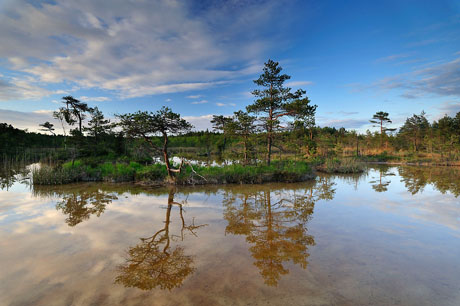 Hydrogen sulphide pond, Kemeri National Park, Latvia: Hydrogen sulphide (H2S) pond with trees reflected in water, Bog forest, Kemeri National Park, Latvia, June 2009. Photograph © Wild Wonders of Europe /Diego Lopez / WWF
Hydrogen sulphide pond, Kemeri National Park, Latvia: Hydrogen sulphide (H2S) pond with trees reflected in water, Bog forest, Kemeri National Park, Latvia, June 2009. Photograph © Wild Wonders of Europe /Diego Lopez / WWF
- Amy Sapkota
- animation health
- antibiotic
- antimicrobial
- antiviral
- Applegate
- bacteria
- bacteriophage
- Bill Bryson
- body
- CDC
- Danielle McDonald
- Denmark
- Director-General
- disease
- dna
- Dr. Margaret Chan
- drug
- drugs
- ECDC
- educational
- efflux
- FDA-CVM
- Get Smart About Antibiotics
- gyrase
- health
- infection
- Marc Sprenger
- MDR-TB
- mechanism
- medical
- medicine
- MRSA
- mutation
- NARMS
- pharmaceuticals
- resistance
- Stephen McDonnell
- Sweden
- Thailand
- US FDA
- USDA
- virus
- WHO
- World Health Organization
- Global Health
- Public Health
- Water
- Water and Sanitation
“The emergence of AMR [antimicrobial resistance] is a complex problem driven by many interconnected factors; single, isolated interventions have little impact. A global and national multi-sectoral response is urgently needed to combat the growing threat of AMR.” (WHO)
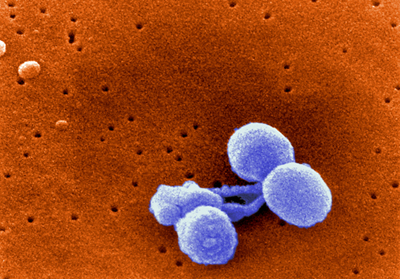 Scanning Electron Micrograph of Streptococcus pneumoniae.: Streptococcus pneumoniae is a leading cause of serious illness among young children worldwide and is the most frequent cause of pneumonia, bacteremia, sinusitis, and acute otitis media (AOM). Widespread overuse of antibiotics contributes to emerging drug resistance. Photograph by courtesy of CDC
Scanning Electron Micrograph of Streptococcus pneumoniae.: Streptococcus pneumoniae is a leading cause of serious illness among young children worldwide and is the most frequent cause of pneumonia, bacteremia, sinusitis, and acute otitis media (AOM). Widespread overuse of antibiotics contributes to emerging drug resistance. Photograph by courtesy of CDC
The world has met the Millennium Development Goal (MDG) target of halving the proportion of people without access to safe drinking water, well in advance of the MDG 2015 deadline, according to a report issued on March 6, 2012 by UNICEF and the World Health Organization (WHO). Between 1990 and 2010, over two billion people gained access to improved drinking water sources, such as piped supplies and protected wells.
Goal 7, target 7c of the Millennium Development Goals aims
at halving by 2015 the proportion of people without sustainable
access to safe drinking water and basic sanitation
The oceans may be acidifying faster today than they did in the last 300 million years, according to scientists who published a paper in the March 2, 2012 issue of the journal Science. "These scientists have synthesized and evaluated evidence far back in Earth's history," said Candace Major, program officer in the National Science Foundation's (NSF) Division of Ocean Sciences, which funded the research. "The ocean acidification we're seeing today is unprecedented…a result of the very fast rates at which we're changing the chemistry of the atmosphere and oceans."
Few parallels for today's rapid ocean changes in geologic record
 Oceans may be acidifying faster today than in the last 300 million years.: Photograph courtesy of NOAAThe oceans may be acidifying faster today than they did in the last 300 million years, according to scientists publishing a paper this week in the journal Science.
Oceans may be acidifying faster today than in the last 300 million years.: Photograph courtesy of NOAAThe oceans may be acidifying faster today than they did in the last 300 million years, according to scientists publishing a paper this week in the journal Science.
- Ampulse Corporation
- carcinogenic chemicals
- concentrating solar power
- crystalline silicon technology global climate change
- National Renewable Energy Laboratory (NREL)
- pollution
- public health
- solar
- solar energy
- solar power
- U.S. Department of Energy's (DOE) )
- Air Pollution
- Energy
- Global Climate Change
- Industry
- Pollution
- Public Health
- Toxic Chemicals
Solar-powered electricity prices could soon approach those of power from coal or natural gas thanks to collaborative research with solar start-up Ampulse Corporation at the U.S. Department of Energy's (DOE) ) National Renewable Energy Laboratory (NREL).
 Ampulse Corporation is installing a pilot production line in the Process Development Integration Laboratory (PDIL) at NREL.: It represents a new, less wasteful way of making solar cells and should result in less expensive devices. Credit: Dennis Schroeder
Ampulse Corporation is installing a pilot production line in the Process Development Integration Laboratory (PDIL) at NREL.: It represents a new, less wasteful way of making solar cells and should result in less expensive devices. Credit: Dennis Schroeder
- Agriculture
- agriculture
- emergency response
- food security analysis
- games
- hunger
- Internet
- malnutrition
- nutrition
- procurement
- technology
- UN
- undernutrition
- World Food Programme
- Desertification
- Global Climate Change
- Natural Disaster Relief
- Pollution
- Population
- Public Health
- Sanitation
- Water
- Water and Sanitation
The World Food Program’s (WPG’s) video game Food Force invites children, and people of all ages, to complete six virtual missions that reflect real-life obstacles faced by WFP in its emergency responses both to the tsunami and other hunger crises around the world.
The Pew Environment Group’s Global Ocean Legacy Program is working with the government of Bermuda, nongovernmental organizations, and scientists to establish the ‘Bermuda Blue Halo,’ a very large, no-take marine reserve to protect the Sargasso Sea within Bermuda's waters.
Photos of the Sargasso Sea courtesy of the Pew Environment Group
Denmark is a leader in implementing well-designed policies for renewable energy, energy efficiency and global climate change, according to a review of Danish energy policies published on 21 February 2012 by the International Energy Agency (IEA).
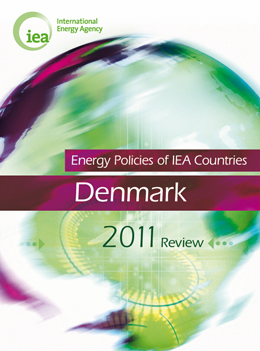 Energy Policies of IEA Countries - Denmark - 2011 Review
Energy Policies of IEA Countries - Denmark - 2011 Review
Denmark is a leader in implementing well-designed policies for renewable energy, energy efficiency and global climate change, according to a review of Danish energy policies published on 21 February 2012 by the International Energy Agency (IEA).
Lower energy consumption for the first nine months of 2011 was reported on 16 February 2012 by the Danish Energy Agency.
[img_assist|nid=629|title=Middelgrunden offshore wind park. Danish wind turbines near Copenhagen.|desc=Wind often flows briskly and smoothly over water since there are no obstructions. The large and slow turning turbines of this offshore wind farm near Copenhagen take advantage of the moderate yet constant breezes at this location. While the wind at this location is not strong it is very consistent, with the turbines generating substantial power over 97 percent of the time.
- Adam Skibbe
- Andrew Elmore
- climate
- drought
- ecosystem
- Global climate change
- heat wave
- Jesse Nippert
- Joseph Craine
- Long-Term Ecological Research
- LTER
- Mary Wilson
- Nathaniel Brunsell
- National Science Foundation
- NSF
- prairie grasslands
- Saran Twombly
- Stacy Hutchinson
- Uriel N. Safriel
- weather
- Biodiversity
- Desertification
- Endangered Species
- Global Climate Change
Results of study on prairie grasslands show differences across the months. Does it matter whether long periods of hot weather, such as last year's heat wave that gripped the U.S. Midwest, happen in June or July, August or September? Scientists studying the subtle effects of heat waves and droughts say that when such weather events happen makes a big difference.
 Scientists have found that U.S. Midwest drought reduced prairie grass growth most in June.: Photograph courtesy of NSF Konza Prairie LTER Site
Scientists have found that U.S. Midwest drought reduced prairie grass growth most in June.: Photograph courtesy of NSF Konza Prairie LTER Site
Results of study on prairie grasslands show differences across the months.
Does it matter whether long periods of hot weather, such as last year's heat wave that gripped the U.S. Midwest, happen in June or July, August or September?
Researchers working in Northern Myanmar captured the first photographs of the recently discovered Myanmar snub-nosed monkey, Rhinopithecus strykeri. The images were reported by Fauna & Flora International (FFI) on 10 January 2012. A joint team from Fauna & Flora International (FFI), Biodiversity and Nature Conservation Association (BANCA) and People Resources and Conservation Foundation (PRCF), caught pictures of the monkey on camera traps placed in the high, forested mountains of Kachin state, bordering China.
.jpg) The Myanmar snub-nosed monkey, Rhinopithecus strykeri,: filmed using a camera trap in forested mountains of Kachin state, bordering China. Photograph courtesy of Fauna & Flora International, BANCA and PRCF
The Myanmar snub-nosed monkey, Rhinopithecus strykeri,: filmed using a camera trap in forested mountains of Kachin state, bordering China. Photograph courtesy of Fauna & Flora International, BANCA and PRCF
A new monkey, a self-cloning skink, five carnivorous plants, and a unique leaf warbler are among the 208 species newly described by science in the Greater Mekong region in 2010 and highlighted in a new WWF report, Wild Mekong.
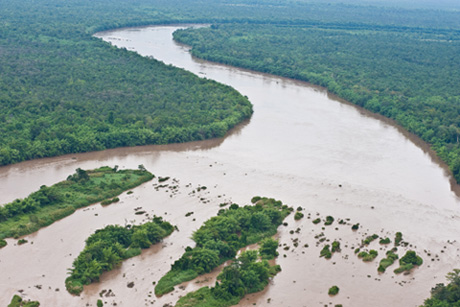 The Mekong River: The Mekong winds 4,800 kilometers down to the South China Sea Photograph © WWF Greater Mekong[img_assist|nid=603|title=Monkey, Rhinopithecus strykeri|desc=While this species, sporting an Elvis-like hairstyle, is new to science, the local people of Myanmar know it well. Scientists first learned of “Snubby” - as they nicknamed the species - from hunters in Myanmar’s forested, remote, and mountainous (Himalayan) Kachin state in early 2010.
The Mekong River: The Mekong winds 4,800 kilometers down to the South China Sea Photograph © WWF Greater Mekong[img_assist|nid=603|title=Monkey, Rhinopithecus strykeri|desc=While this species, sporting an Elvis-like hairstyle, is new to science, the local people of Myanmar know it well. Scientists first learned of “Snubby” - as they nicknamed the species - from hunters in Myanmar’s forested, remote, and mountainous (Himalayan) Kachin state in early 2010.
Small-scale dairy farmers in this remote area of Bolivia's northeastern Amazon region of Beni have a new hope for protecting their livestock from the fierce annual floods that start in December. The answer: artificial hills complete with grass and a feed storage shed, where the cattle can wait out the floods.
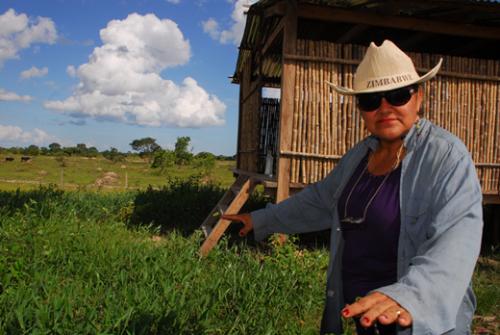 Dora Domínguez shows IPS the forage grown on the artificial hill and the feed storage shed, behind her.: This is an example of an artificial 'island' created to protect cattle and feed from annual floods in Bolivia Photograph by Franz Chávez/IPS
Dora Domínguez shows IPS the forage grown on the artificial hill and the feed storage shed, behind her.: This is an example of an artificial 'island' created to protect cattle and feed from annual floods in Bolivia Photograph by Franz Chávez/IPS
In London on October 5, 2011, former U.S. President Jimmy Carter addressed an audience of international journalists and partners to announce that the Carter Center-led global campaign to eradicate Guinea worm disease has entered its final stage to end this gruesome waterborne parasitic infection. “The poorest, most isolated, most neglected, quite often, the most hopeless people, on earth…now have new hope that their future will be free of this dreaded disease,” said President Carter.
 “The U.K. has shown its willingness and staying power to help eradicate this debilitating disease.: I call on other donors to match their efforts,” President Carter said. (Left to Right: Minister O’Brien, President Carter, and Director-General Chan) Photograph courtesy of The Carter Center/ J. Cobb
“The U.K. has shown its willingness and staying power to help eradicate this debilitating disease.: I call on other donors to match their efforts,” President Carter said. (Left to Right: Minister O’Brien, President Carter, and Director-General Chan) Photograph courtesy of The Carter Center/ J. Cobb
Scientists Dennis Bazylinski and colleagues at the University of Nevada Las Vegas (UNLV) sluice through every water body they can find in Nevada looking for new forms of microbial magnetism.
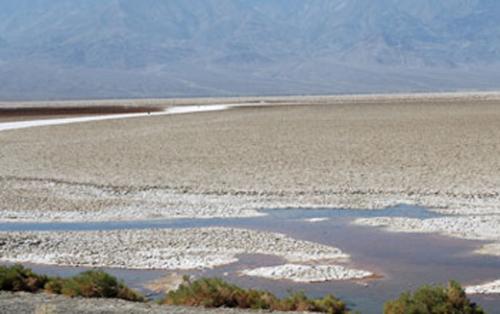 Badwater Basin, lowest elevation in the Western He: Photograph by Dennis Bazylinski and Christopher Lefèvre
Badwater Basin, lowest elevation in the Western He: Photograph by Dennis Bazylinski and Christopher Lefèvre
Nevada, the "Silver State," is well-known for mining precious metals.
But scientists Dennis Bazylinski and colleagues at the University of Nevada Las Vegas (UNLV) do a different type of mining.
They sluice through every water body they can find, looking for new forms of microbial magnetism.
Historic ‘mercury and air toxics standards’ meet 20-year old requirement to cut dangerous smokestack emissions: The U.S. Environmental Protection Agency (EPA) has issued the Mercury and Air Toxics Standards, the first national standards to protect American families from power plant emissions of mercury and toxic air pollution like arsenic, acid gas, nickel, sele nium, and cyanide. The standards will slash emissions of these dangerous pollutants by relying on widely available, proven pollution controls that are already in use at more than half of the nation’s coal-fired power plants.
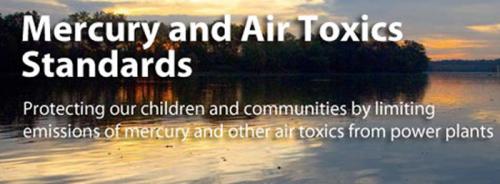 U.S. Environmental Protection Agency Issues First National Standards for Mercury Pollution from Power Plants: Historic ‘mercury and air toxics standards’ meet 20-year old requirement to cut dangerous smokestack emissions
U.S. Environmental Protection Agency Issues First National Standards for Mercury Pollution from Power Plants: Historic ‘mercury and air toxics standards’ meet 20-year old requirement to cut dangerous smokestack emissions
The U.S. Environmental Protection Agency (EPA) on 7 December 2011 announced it will provide up to $1.8 million for projects across the country to protect Americans’ health and help restore urban waters by improving water quality and supporting community revitalization. The funding is part of EPA’s Urban Waters program, which supports communities in their efforts to access, improve and benefit from their urban waters and the surrounding land. Urban waters are canals, rivers, lakes, wetlands, aquifers, estuaries, bays and oceans.
 The goal of EPA’s urban waters small grants is to fund projects, training and research that will advance restoration of urban wa
The goal of EPA’s urban waters small grants is to fund projects, training and research that will advance restoration of urban wa
The U.S. Environmental Protection Agency (EPA) released its Healthy Indoor Environment Protocols for Home Energy Upgrades to better integrate health protections into energy efficiency programs.
 |
A new global scientific review shows that simple changes in fishing gear could significantly reduce the large number of sharks unintentionally caught in the world’s oceans.
A new global scientific review shows that simple changes in fishing gear could significantly reduce the large number of sharks unintentionally caught in the world’s oceans.
The Solvatten unit is a portable, household item which treats and heats 11 liters of water when exposed to sunshine for 2-6 hours.
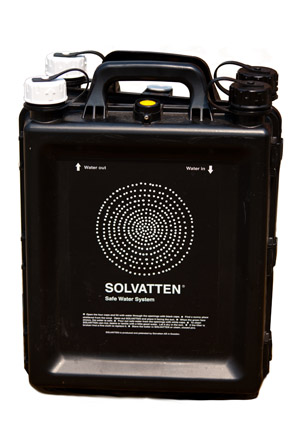 |
| Solvatten provides safe and warm water. It is easy to use, saves time, money and firewood, and improves health and the environment. Solvatten contributes to the realization of the UN Millennium Development Goals. |
Search
Latest articles
Agriculture
- World Water Week: Healthy ecosystems essential to human health: from coronavirus to malnutrition Online session Wednesday 24 August 17:00-18:20
- World Water Week: Healthy ecosystems essential to human health: from coronavirus to malnutrition Online session Wednesday 24 August 17:00-18:20
Air Pollution
- "Water and Sanitation-Related Diseases and the Changing Environment: Challenges, Interventions, and Preventive Measures" Volume 2 Is Now Available
- Global Innovation Exchange Co-Created by Horizon International, USAID, Bill and Melinda Gates Foundation and Others
Biodiversity
- World Water Week: Healthy ecosystems essential to human health: from coronavirus to malnutrition Online session Wednesday 24 August 17:00-18:20
- Mangrove Action Project Collaborates to Restore and Preserve Mangrove Ecosystems
Desertification
- World Water Week: Healthy ecosystems essential to human health: from coronavirus to malnutrition Online session Wednesday 24 August 17:00-18:20
- UN Food Systems Summit Receives Over 1,200 Ideas to Help Meet Sustainable Development Goals
Endangered Species
- Mangrove Action Project Collaborates to Restore and Preserve Mangrove Ecosystems
- Coral Research in Palau offers a “Glimmer of Hope”
Energy
- Global Innovation Exchange Co-Created by Horizon International, USAID, Bill and Melinda Gates Foundation and Others
- Wildlife Preservation in Southeast Nova Scotia
Exhibits
- Global Innovation Exchange Co-Created by Horizon International, USAID, Bill and Melinda Gates Foundation and Others
- Coral Reefs
Forests
- NASA Satellites Reveal Major Shifts in Global Freshwater Updated June 2020
- Global Innovation Exchange Co-Created by Horizon International, USAID, Bill and Melinda Gates Foundation and Others
Global Climate Change
- World Water Week: Healthy ecosystems essential to human health: from coronavirus to malnutrition Online session Wednesday 24 August 17:00-18:20
- Mangrove Action Project Collaborates to Restore and Preserve Mangrove Ecosystems
Global Health
- World Water Week: Healthy ecosystems essential to human health: from coronavirus to malnutrition Online session Wednesday 24 August 17:00-18:20
- More than 400 schoolgirls, family and teachers rescued from Afghanistan by small coalition
Industry
- "Water and Sanitation-Related Diseases and the Changing Environment: Challenges, Interventions, and Preventive Measures" Volume 2 Is Now Available
- Global Innovation Exchange Co-Created by Horizon International, USAID, Bill and Melinda Gates Foundation and Others
Natural Disaster Relief
- STOP ATTACKS ON HEALTH CARE IN UKRAINE
- Global Innovation Exchange Co-Created by Horizon International, USAID, Bill and Melinda Gates Foundation and Others
News and Special Reports
- World Water Week: Healthy ecosystems essential to human health: from coronavirus to malnutrition Online session Wednesday 24 August 17:00-18:20
- STOP ATTACKS ON HEALTH CARE IN UKRAINE
Oceans, Coral Reefs
- World Water Week: Healthy ecosystems essential to human health: from coronavirus to malnutrition Online session Wednesday 24 August 17:00-18:20
- Mangrove Action Project Collaborates to Restore and Preserve Mangrove Ecosystems
Pollution
- Zakaria Ouedraogo of Burkina Faso Produces Film “Nzoue Fiyen: Water Not Drinkable”
- "Water and Sanitation-Related Diseases and the Changing Environment: Challenges, Interventions, and Preventive Measures" Volume 2 Is Now Available
Population
- "Water and Sanitation-Related Diseases and the Changing Environment: Challenges, Interventions, and Preventive Measures" Volume 2 Is Now Available
- "Water and Sanitation-Related Diseases and the Changing Environment: Challenges, Interventions, and Preventive Measures" Volume 2 Is Now Available
Public Health
- Honouring the visionary behind India’s sanitation revolution
- Honouring the visionary behind India’s sanitation revolution
Rivers
- World Water Week: Healthy ecosystems essential to human health: from coronavirus to malnutrition Online session Wednesday 24 August 17:00-18:20
- Mangrove Action Project Collaborates to Restore and Preserve Mangrove Ecosystems
Sanitation
- Honouring the visionary behind India’s sanitation revolution
- Honouring the visionary behind India’s sanitation revolution
Toxic Chemicals
- "Water and Sanitation-Related Diseases and the Changing Environment: Challenges, Interventions, and Preventive Measures" Volume 2 Is Now Available
- Actions to Prevent Polluted Drinking Water in the United States
Transportation
- "Water and Sanitation-Related Diseases and the Changing Environment: Challenges, Interventions, and Preventive Measures" Volume 2 Is Now Available
- Urbanization Provides Opportunities for Transition to a Green Economy, Says New Report
Waste Management
- Honouring the visionary behind India’s sanitation revolution
- Honouring the visionary behind India’s sanitation revolution
Water
- Honouring the visionary behind India’s sanitation revolution
- Honouring the visionary behind India’s sanitation revolution
Water and Sanitation
- Honouring the visionary behind India’s sanitation revolution
- Honouring the visionary behind India’s sanitation revolution

